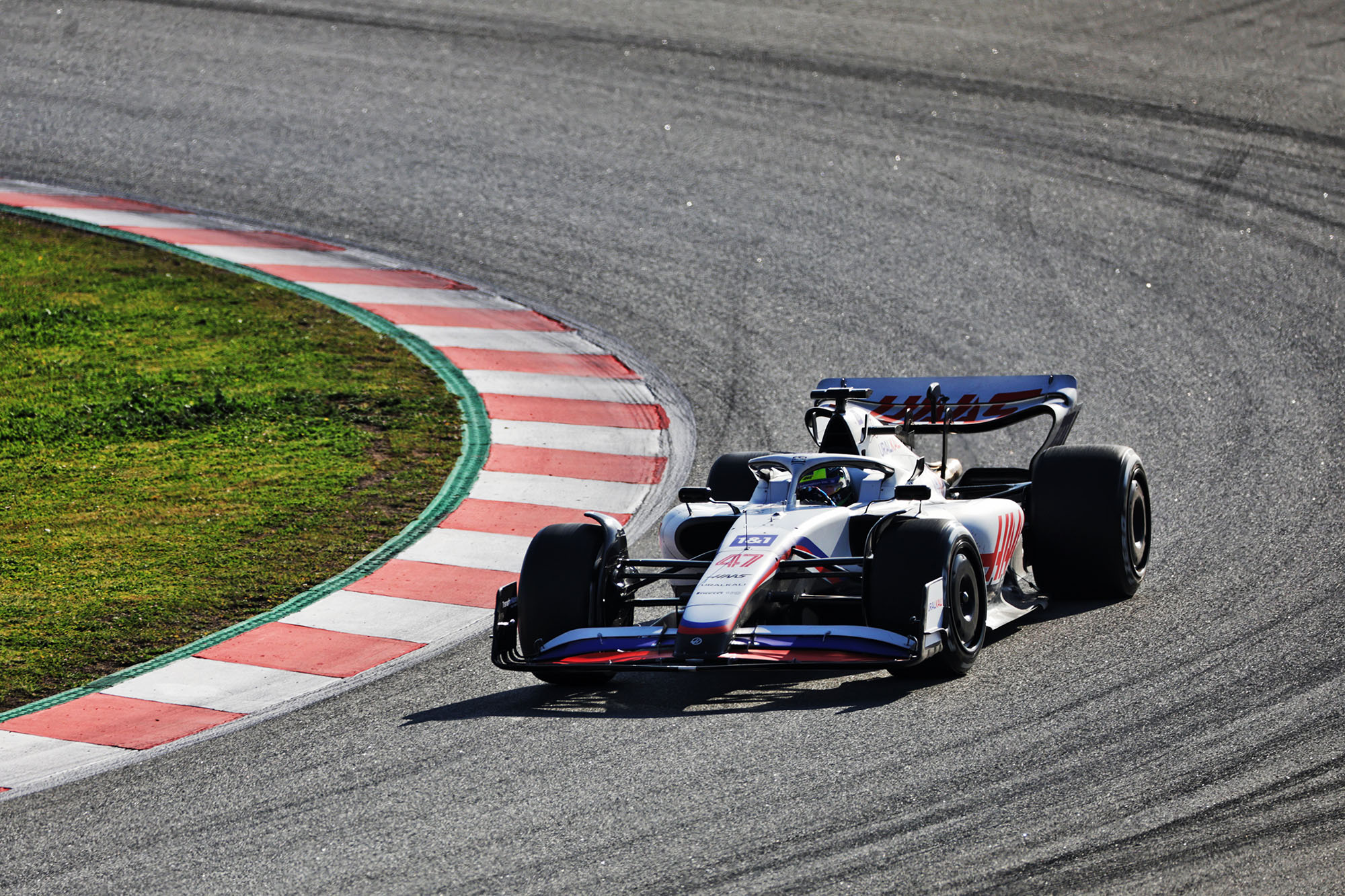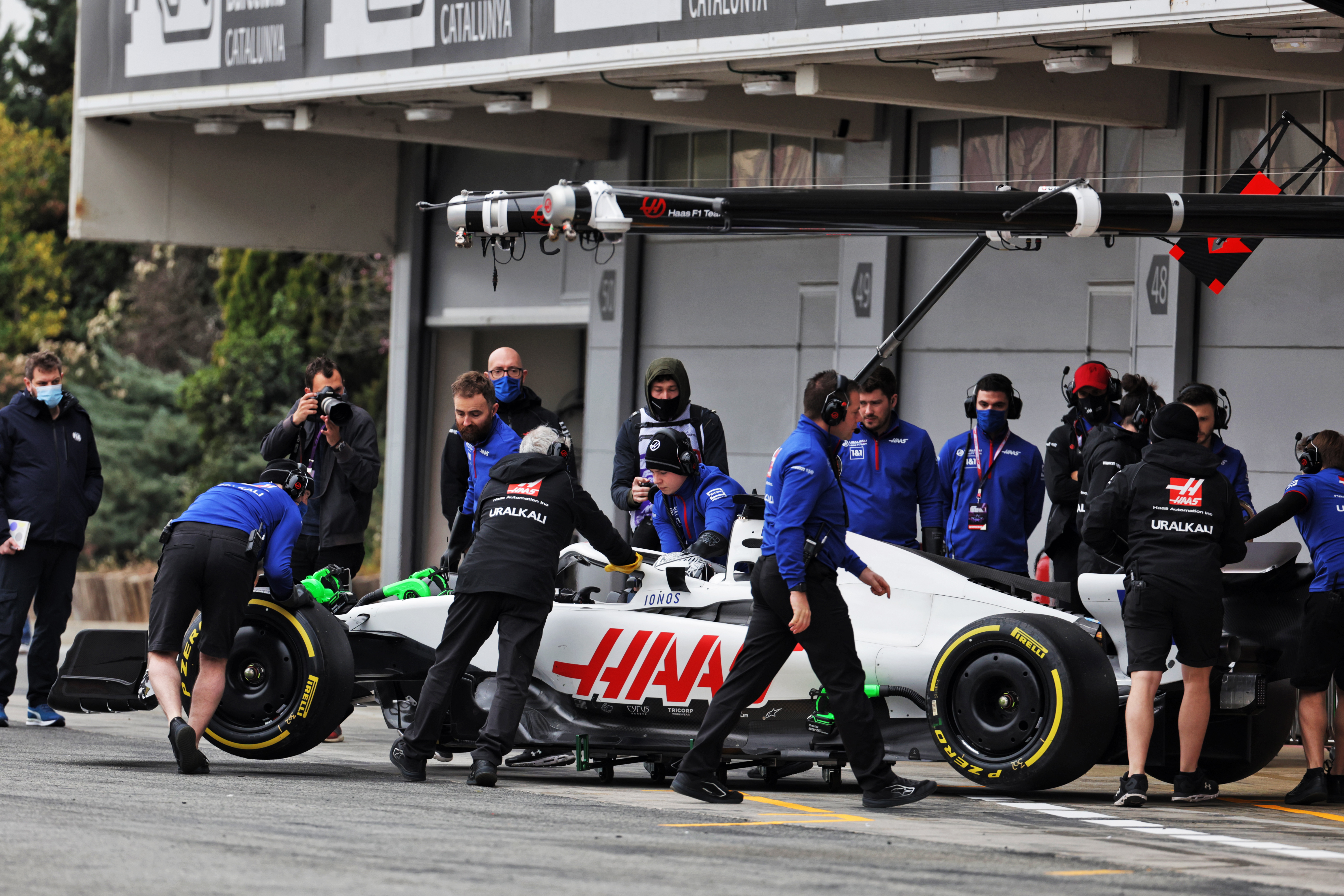Up Next

The Haas Formula 1 team has endured a tough time off track in 2022, with upheaval in its driver line-up and even freight problems making getting its equipment to Bahrain a challenge.
But on-track, things haven’t gone well either, making this week’s test crucial to its hopes.
No team completed fewer laps during the first three days of testing at Barcelona than the 160 Haas managed, although it at least outpaced Alfa Romeo.
While the second day was productive, with Nikita Mazepin and Mick Schumacher completing 108 laps between them, this was the only one of the three days that went relatively smoothly.
The first day was blighted by problems with a cooling leak in the morning requiring the floor to be removed for it to be fixed and some minor sensor problems sapping time. Schumacher managed only three laps in the afternoon thanks to floor damage.
On day three, Mazepin managed just nine laps before the car ground to a halt for good with what the team described as an “oil system issue”.
“The second day was actually pretty good, we learned a lot,” said team principal Guenther Steiner. “We had three days of testing, but really we only managed one.”
It was a disappointing start for a team that heads into 2022 with high hopes, having effectively sacrificed last season by doing the bare minimum to the car to focus on the VF-22.
But given it is still early days, Barcelona might prove just to be a setback rather than a harbinger of doom for 2022. After all, the car itself looks like a tidy design with some eye-catching detail and the team hasn’t really had enough running to show what it can do.
Given Haas was making decent progress when the car did run, the hope is that it will pick up where it left off on day two at Barcelona when running begins in Bahrain.
Back in Barcelona, technical director Simone Resta said on the second afternoon that “a nice day like today [on day three] would be great, to keep running the car without any headaches”.

Doubtless, he would share the same wish for the Bahrain test. What is clear is there is plenty more to come from Haas. After all, at the point he was hoping for a smooth final day, he said that Haas had yet to do any significant work on balancing the car so there should be more performance to exploit as mileage increases.
Like many teams, Haas did encounter some problems with porpoising in the Barcelona test, but worked to contain its issues.
“We are trying to run and learn and do mileage on it,” Resta told The Race in Spain.
“Everyone is learning new things that maybe they weren’t expecting. We just have to manage it in the best way and put mileage on the car and just keep going to learn and understand.”
Fortunately, Haas does have several advantages. Firstly, it knows that the Ferrari power unit it’s using appears to be a competitive proposition based on the early signs from Barcelona. It also has a car that, mechanically, comprises largely Ferrari components that racked up plenty of mileage with the works team.
While Haas has to produce its own aerodynamic components and monocoque, along with all parts defined as ‘listed team components’, its focus on its own aero parts benefits reliability and allows it dedicate more time and resource to the performance components.
“We have the smallest team on the grid and our business model is clear,” said Resta. “We try to purchase as many components as we can within the regulations.
“The specification of components is changing for this year so the parameter is slightly different. Anyhow, we have just adapted to the situation and we try to maximise the components we can buy. And it’s going pretty well.
“We are taking from them the gearbox, the engine, the [energy] storage, the power unit, gearbox and some of the suspension components you can buy – and the rest we develop ourselves.”
Where Haas did struggle at Barcelona was on parts. Like many teams, it didn’t always have the necessary spares to deal with damage.
In the case of the floor, that was particularly problematic given the issue that cost Schumacher most of his afternoon running on the first day.
“We came to test quite a bit tight in terms of timing and spare number of parts,” said Resta. “Normally if you have some little issue, maybe you change the floor, but we are a bit tighter.
“We tried to maximise what we could put together, so now we are getting more parts, we are moving on.
“It’s quite clearly visible on the track the cars are running quite low this year. So that brings the issues it brings, you are closer to the kerbs in some conditions etc so you are a bit more exposed. You learn about how it works and you fine-tune yourself.”

The spares situation should be improved in Bahrain, so despite the disruption of the late arrival of freight from the UK and the change to Pietro Fittipaldi driving, it should be in a position to rack up the miles and fine-tune the car this week.
And the car does appear to have genuine potential, provided Haas can get it working as hoped. It’s just unclear how much potential there is as we haven’t seen enough of it.
But if problems are ongoing, that could point to a difficult start to the season for Haas, a team that would benefit from a morale-boosting beginning of the year more than most.





